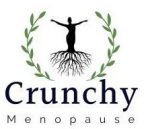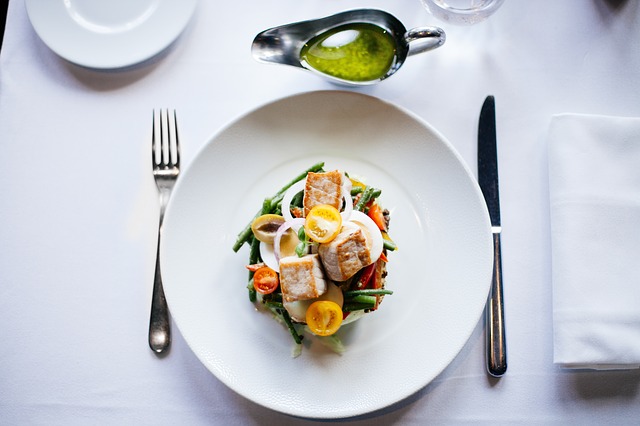WHAT IS OMAD?
OMAD means one meal a day. Generally speaking, one meal a day means supper. Some people think that you have to have only one plate a day. But that would mean instead of saying it’s OMAD, you’d have to call it OPAD (one plate a day)
That to me is nonsense.
The premise behind OMAD is not as much eating one meal in a single sitting, as it is in eating all your calories in a small eating window.
If I need 1300 calories a day to maintain proper BMI, then I’m going to have to get that somehow. Can I fill my plate with 1300 calories? I don’t think so.
Instead, OMAD is better defined as the 20:4 fast. That means fasting for 20 hours a day, including when you sleep, and eating for four hours a day. Four hours would be your eating window. You don’t necessarily want to pig out for four long hours though.
What you want to do is consume your 1300 calories in that short four-hour window somehow. That might mean a normal supper and a few snacks like an orange and a bowl of peanuts in the evening.
However you want to spread it around, it’s important to know that you must take in the number of calories you need for your proper body mass index.
If you don’t do that, and you think that one plate is enough, you might suffer from malnutrition later on down the road. Calories are important and we need them to survive, so we have to ensure that we have enough of them every day.
Not only that, but we must consume enough vitamins and minerals every day as well, and in my opinion, that can’t be achieved with one small supper plate.
For example, if we don’t get enough protein in our diet, our hair will fall out. I for one, do not want that. I always make sure I have a scoop of protein powder every day when I do OMAD.
RULES THAT CAN BE SKEWED
OMAD rules can be skewed and that’s okay. When you ask intermittent fasters what OMAD is, some of the definitions can be quite different.
Some people are adamant that one meal a day means one meal a day. To them, one meal means one plate. For me, one meal means my daily caloric intake for my body mass index.
As you can see, different definitions depending on who you talk to, and that’s okay. We’re all different and we all have different opinions.
Every body is different.
Some people referred to OMAD as the warrior diet. It’s full of protein and things a warrior would eat. It’s still one meal a day, but it’s gigantic. There have been many people that have successfully lost weight this way.
They’ve not only lost weight, but they have washboard abs. They gained incredible muscle like a bodybuilder. I think of Hugh Jackman when I say this. He practiced this kind of intermittent fasting to gain his muscles for the movie Wolverine.
Bear in mind, if you’re going to eat gigantic meals, you’re going to need to become a gym rat because if you don’t lift those weights and work out like a madman, you’re going to get fat all over again.
Who wants that?
The main thing to remember is that you have to eat according to your body’s BMI. If you don’t know what that is, Google BMI calculators online and you’ll be able to find out how many calories you should be consuming for your body type and condition.
WHAT CAN YOU EAT?
I eat anything I want. I’m sorry, but I have a strong opinion that if I eliminate an entire food group, I will eventually go back to it.
If you tell me I can’t have something, I’ll want it. That’s human nature. It’s like telling a teenager not to stay out after midnight. They’re going to want to stay out after midnight just because you told them not to.
If I stop eating ice cream, that means I can never have it for the rest of my life. I won’t do that to myself. If my grandchild wants to go out for ice cream on a hot summer day, I’m going to do that. How could I not?
If someone decides to cut out bread from their diet, you better be prepared to never ever have bread again. What that means is when you’re 80 years old you’re not going to be able to have a piece of toast or bread ever again.
Don’t do that to yourself. It’s a recipe for failure. That’s why diets fail. Thankfully, intermittent fasting is not a diet, it’s just a different way of eating.
I incorporate every food type into my diet on OMAD. I eat steak and potatoes. I eat popcorn. I eat pizza. I eat hamburgers and hotdogs. I eat cake and pie and ice cream. I eat fast food. I eat healthy food. I eat whatever the heck I want and I’m proud of it.
And I eat it guilt-free.
LONG TERM EFFECTS
The long-term effects of OMAD are quite interesting. It seems that you can maintain your weight-loss long-term by doing this program. I have.
I have managed to lose 50 pounds and maintain that for years now eating OMAD. It’s a great maintenance program, but in my opinion, it isn’t as effective as other intermittent fasting types like the 5:2 fast or two-day water fasts.
Some would disagree, and that’s okay. We’re all different. If the OMAD program has been your only source of weight loss, then congratulations. You should be proud of yourself.
For me, I lost the weight by doing the 5:2 fast. Then I graduated into various other types of intermittent fasting like the 16:8. Now I do OMAD for maintenance. I throw in a 2-day fast here and there, with a long 3 or 4 day water fast once a month.
Like I said, we are all different and we need to embrace that. What works for one may not work for another and we need to respect that.
BENEFITS OF OMAD
The benefits of OMAD are the same as the benefits you get from intermittent fasting because it is intermittent fasting.
For some reason, people think that OMAD is somehow different than the normal forms of intermittent fasting but it isn’t. It’s exactly the same. It’s a caloric deficit created by you in order to maintain a proper balance in your diet.
Not only that, but it’s a form of intermittent fasting that gives you huge health benefits like youthfulness. On OMAD, I feel young again. It seems to reverse the aging process, or at the very least, slow it down.
OMAD benefits you by preventing disease. It heals the body through cell regeneration called autophagy. That’s when good cells deliberately go on the hunt for bad cells and replace them. How cool is that!
OMAD benefits you by preventing Alzheimer’s, diabetes, cancer, and high blood pressure. It lowers cholesterol and fixes digestive issues like irritable bowel syndrome and leaky gut.
OMAD helps heal skin issues like acne and eczema. I used to suffer from severe eczema all over my body. One year I had a bout of bad eyelid eczema for three long excruciating months.
I don’t suffer from that anymore.
I used to have back and neck issues, and dizziness, but not anymore. OMAD seems to repair problem areas in your body, and boost your immune system so you don’t get sick as often.
There are so many benefits to OMAD, I can’t begin to name them all. Many of them I’ve experienced myself, and others I’ve just heard of. Harvard studies prove the incredible benefits. I’ll link the study at the end of the article.
All I know is that more people need to look into intermittent fasting as a whole health solution. OMAD is just one version of intermittent fasting. I highly suggest you look into this way of eating and also explore other versions of intermittent fasting so you can experience the benefits as I have.
HAVE A HAPPY OMADIC EXPERIENCE!
If you liked this article, please consider pinning it on Pinterest by clicking the picture below.

For further information, go to the Hungry Old Lady Youtube channel by clicking on the video at the end. I hope you enjoyed this article and consider living an intermittent fasting lifestyle.



Kathleen…do you coach OMAD? Peter I’m interested…
No, sorry, not at this time.